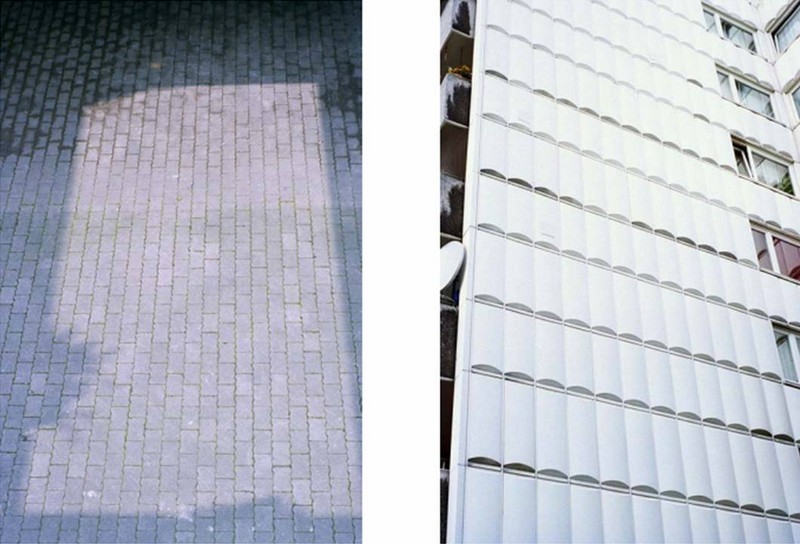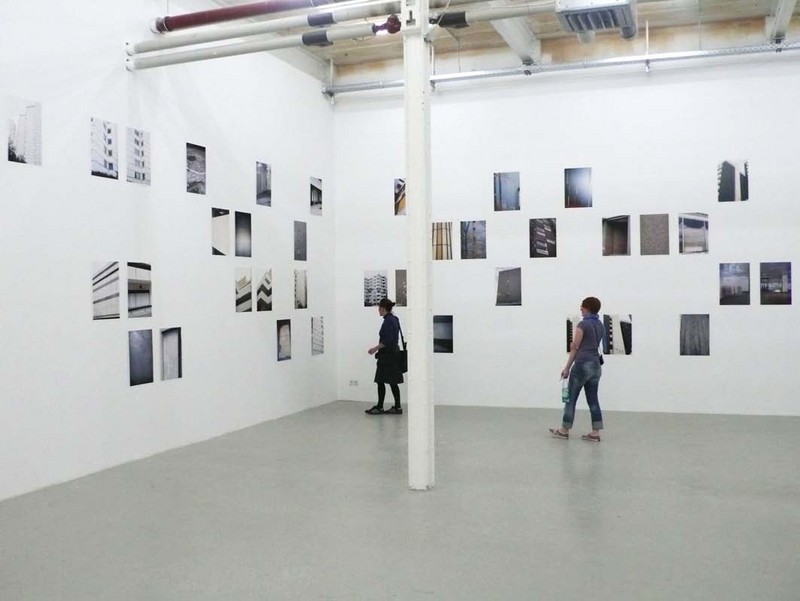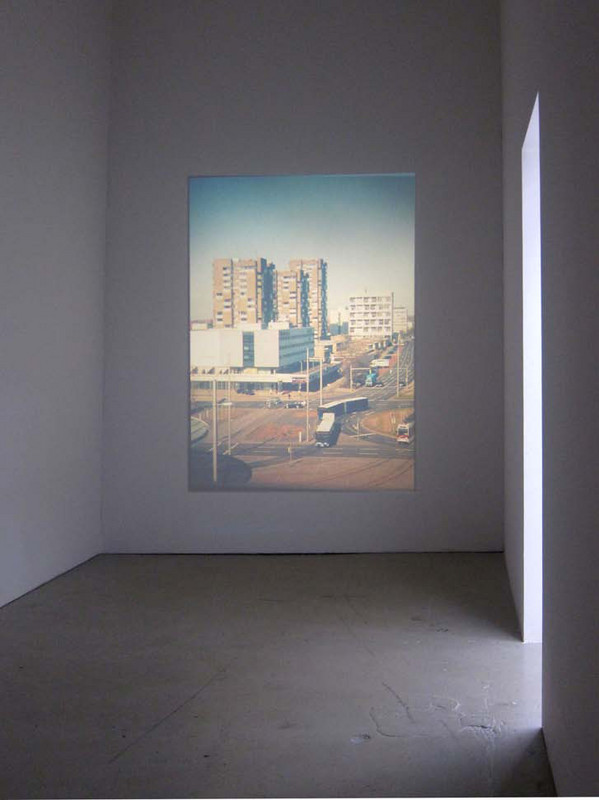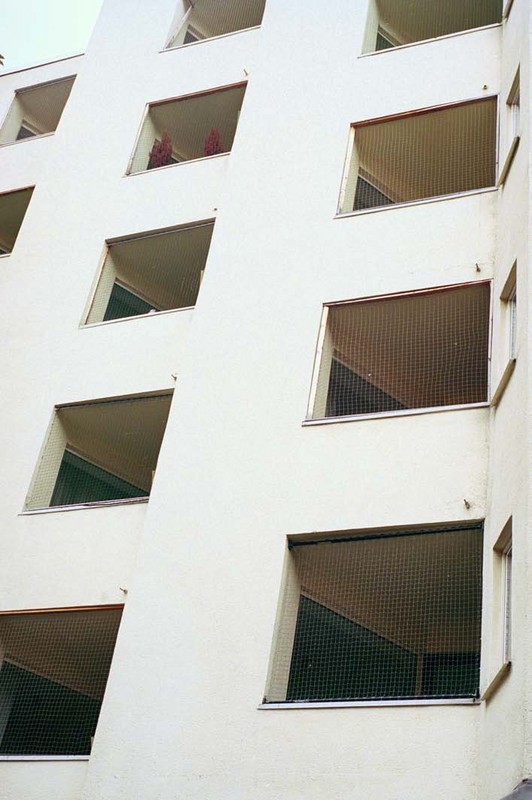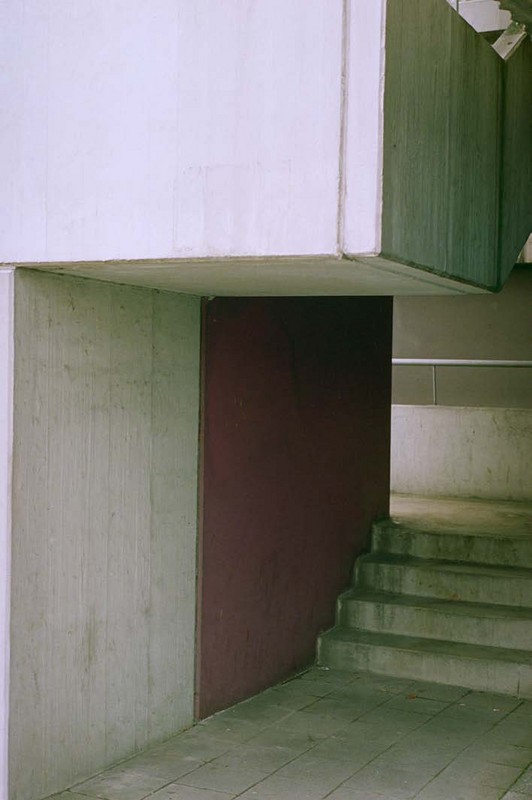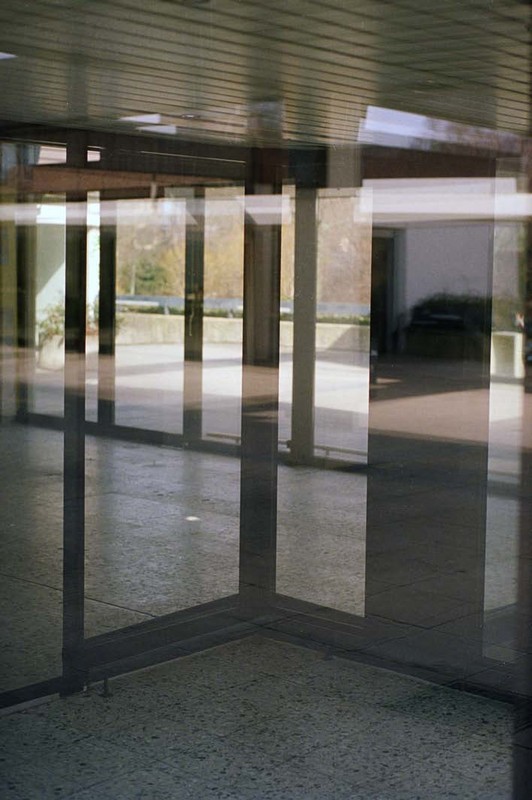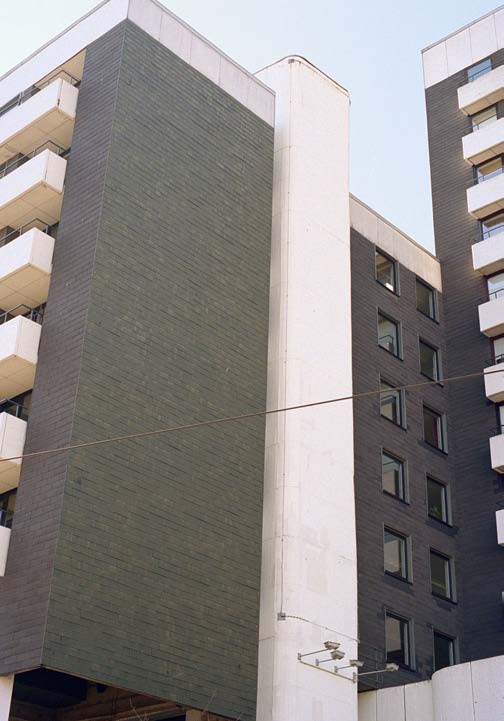Caroline Hake ABSTRACTS
01 - 29 May 2011
CAROLINE HAKE
Abstracts
1 - 29 May, 2011
Caroline Hake’s new work inspects the public living space of large West German cities. Tall façades consisting of planes and grids, corner solutions, stairs, altered space out of cement, puddles on sealed land emerged from the point of view of someone taking a stroll. The visible decay of this architecture is combined with knowledge of the ideals and innovations of the 1960s and 1970s to become demurely charming.
Over time and with a changing urban context, architecture reveals a new dimension, makes a statement about itself—what it once wanted to be and what it actually represents, how it behaves with respect to its own history and to the respective world of today, whether its concept is in a position to align itself with courses of time.
Abstracts is an alternative plan to nostalgia, a scrutinizing look at the endurance of in part utopian ideologies of living, at what remains of the substance of a barely palpable epoch. An examination of objects that have been reoriented in terms of urban planning with respect to their validity after forty years, an inquiry into their claim to help shape social life and a dehierarchized organization of space. What were taken were photographs from the perspective of an urban reality that has long since caught up with these buildings and forced them to the edge of perception.
Caroline Hake’s abstracting approach—choice of structures, details, chromacities, and their visual composition—allows the structures to be perceived as aesthetic objects and at the same time demonstrates their decline as backdrops and traces of contemporary social reality. The two-dimensional detail creates added distance: as a photographic metaperspective, it is less the case that Abstracts captures a moment in time and more that a space of time is stretched between the 1960s and 1970s and the work’s creation in 2010. Priority is given to the relativity of the modernist claim of this architecture and thus its close relationship with time-bound ideology, dogma, and aesthetics. By means of reducing it to the level of the image, for the viewer, architecture becomes a materially static yet at the same time flexible symbol in terms of its meaning: the gap between claim and reality only becomes visible in retrospect.
© Bettina Reichmuth
Abstracts
1 - 29 May, 2011
Caroline Hake’s new work inspects the public living space of large West German cities. Tall façades consisting of planes and grids, corner solutions, stairs, altered space out of cement, puddles on sealed land emerged from the point of view of someone taking a stroll. The visible decay of this architecture is combined with knowledge of the ideals and innovations of the 1960s and 1970s to become demurely charming.
Over time and with a changing urban context, architecture reveals a new dimension, makes a statement about itself—what it once wanted to be and what it actually represents, how it behaves with respect to its own history and to the respective world of today, whether its concept is in a position to align itself with courses of time.
Abstracts is an alternative plan to nostalgia, a scrutinizing look at the endurance of in part utopian ideologies of living, at what remains of the substance of a barely palpable epoch. An examination of objects that have been reoriented in terms of urban planning with respect to their validity after forty years, an inquiry into their claim to help shape social life and a dehierarchized organization of space. What were taken were photographs from the perspective of an urban reality that has long since caught up with these buildings and forced them to the edge of perception.
Caroline Hake’s abstracting approach—choice of structures, details, chromacities, and their visual composition—allows the structures to be perceived as aesthetic objects and at the same time demonstrates their decline as backdrops and traces of contemporary social reality. The two-dimensional detail creates added distance: as a photographic metaperspective, it is less the case that Abstracts captures a moment in time and more that a space of time is stretched between the 1960s and 1970s and the work’s creation in 2010. Priority is given to the relativity of the modernist claim of this architecture and thus its close relationship with time-bound ideology, dogma, and aesthetics. By means of reducing it to the level of the image, for the viewer, architecture becomes a materially static yet at the same time flexible symbol in terms of its meaning: the gap between claim and reality only becomes visible in retrospect.
© Bettina Reichmuth

